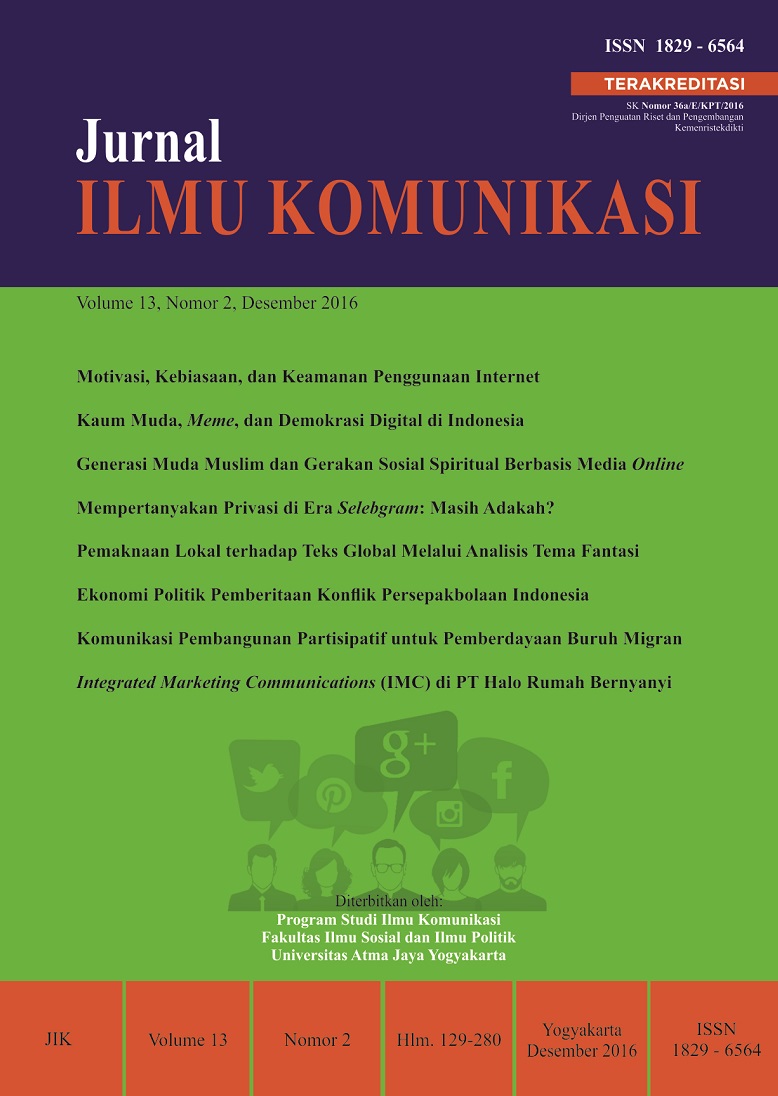Mempertanyakan Privasi di Era Selebgram: Masih Adakah?
DOI:
https://doi.org/10.24002/jik.v13i2.682Abstract
Abstract: Instagram marks the importance of participatory culture in the era of new media. This paper aims to examine the complex notion of privacy in regards to children’s privacy that were made famous (by their parents) through Instagram with the selebgram phenomenon. By examining the data gathered using #selebgram and underlining the self-presentation perspective in the study of the psychological communication, the results show that parents have their own motives and goal when uploading their child’s fotos on Instagram. Consequently, the childs have to lose their privacy in cyberspace and of course, the information is vulnerable to crime.
Keywords: children’s privacy, Instagram, selebgram, self-presentation
Abstrak: Instagram menandai gagasan pentingnya budaya partisipatif dalam era media baru. Tujuan dari paper ini adalah untuk menganalisa konsep Instagram sebagai forum dan sarana komunikasi dengan melihat fenomena selebgram. Paper ini meneliti gagasan kompleks privasi dalam hal privasi anak-anak yang dibuat terkenal (oleh orang tua mereka) melalui Instagram dengan memeriksa data yang dikumpulkan menggunakan #selebgram dan menggarisbawahi perspektif presentasi diri dalam kajian psikologi komunikasi. Hasil analisa menunjukkan bahwa ada motif dan tujuan orang tua memuat foto anaknya di akun Instagram. Sedangkan dampaknya, anak tidak mempunyai privasi di dunia maya dan tentunya informasi tersebut akan rentan disalahgunakan untuk kejahatan.
Kata Kunci: Instagram, presentasi diri, privasi anak, selebgram
Downloads
Published
How to Cite
Issue
Section
License
Jurnal ILMU KOMUNIKASI is an academic journal. As such, it is dedicated to the open exchange of information. For this reason, JIK is freely available to individuals and institutions. Authors who publish in Jurnal ILMU KOMUNIKASI will release their articles under the Creative Commons Attribution (BY) License. This license allows anyone to copy and redistribute the article in any medium or format as well as remix, transform, and build upon the material for any purpose, even commercially as long as they credit the authors for the original creation. For details of the rights authors grants users of their work, see the "human-readable summary" of the license, with a link to the full license. (Note that "you" refers to a user, not an author, in the summary)
 This work is licensed under a Creative Commons Attribution 4.0 International License.
This work is licensed under a Creative Commons Attribution 4.0 International License.














